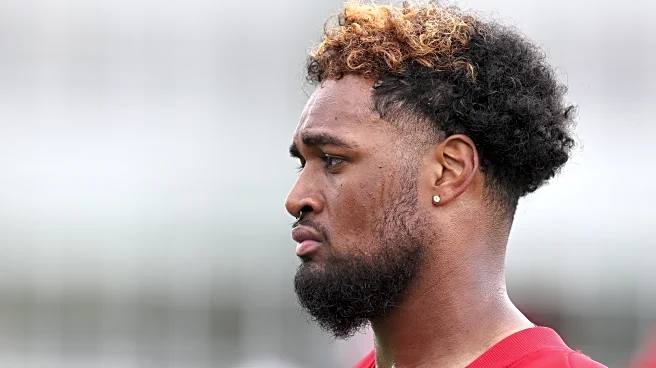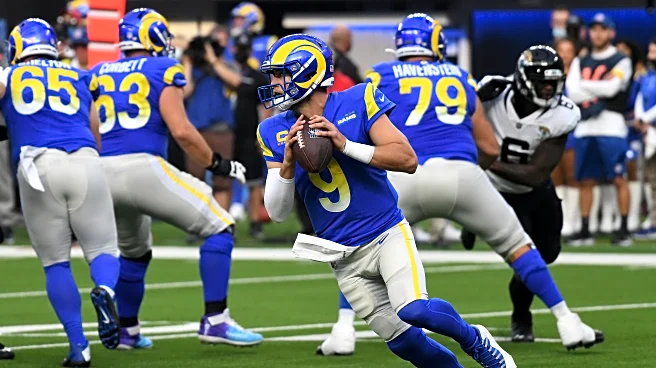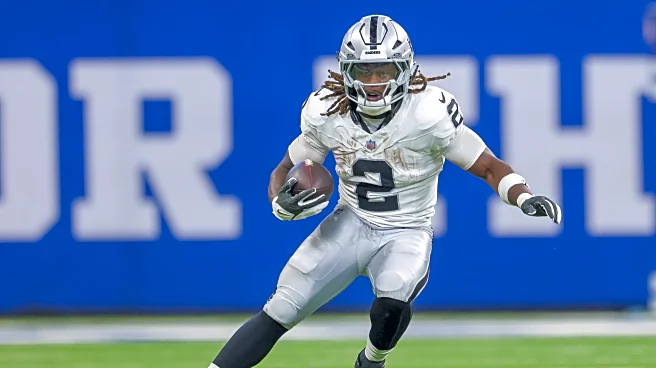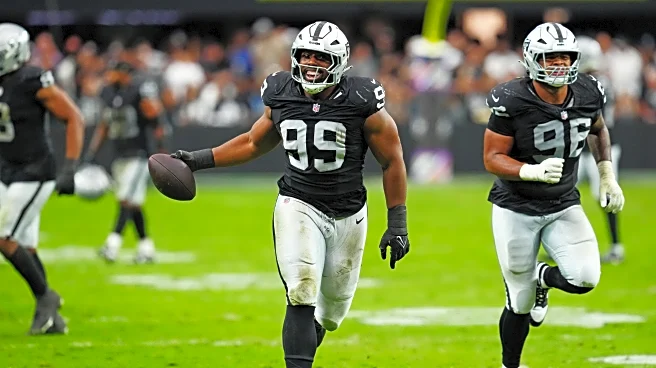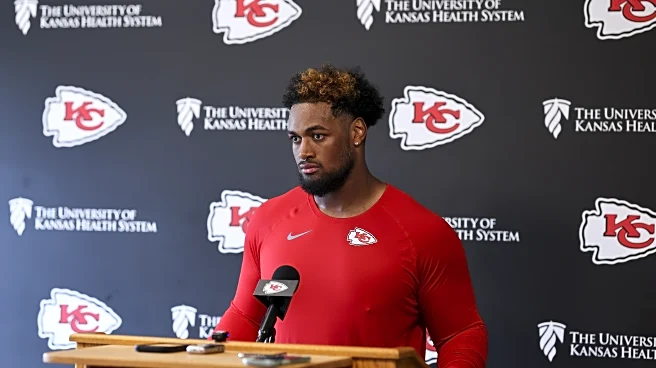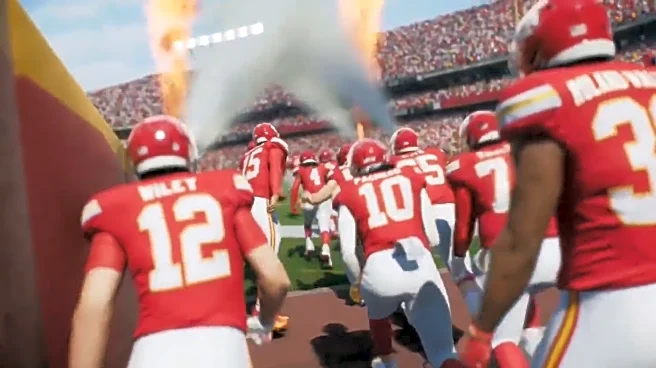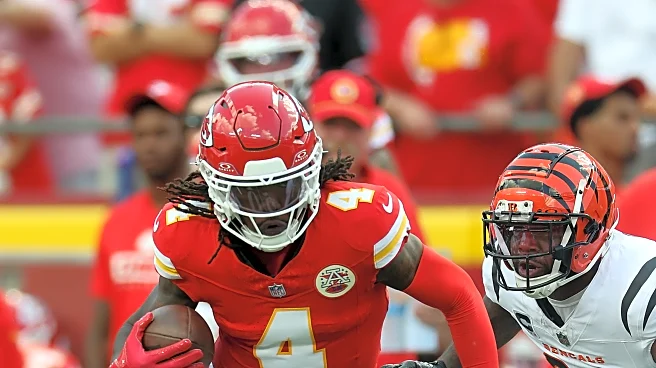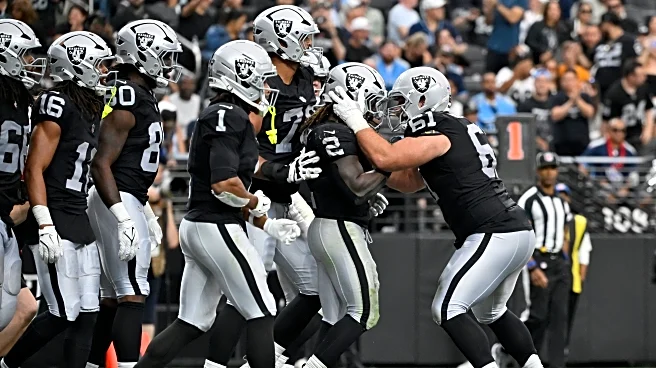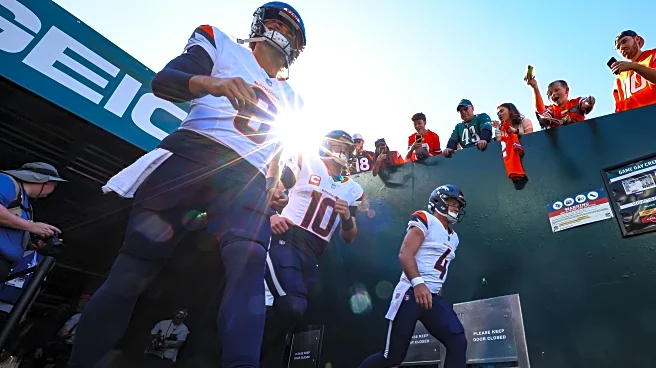What's Happening?
In a Madden simulation of the Week 7 matchup, the Kansas City Chiefs secured a victory against the Las Vegas Raiders with a final score of 35-25. The game featured standout performances from Patrick Mahomes, who completed 27 of 30 passes for 297 yards
and three touchdowns, and also rushed for two touchdowns. The Raiders struggled with their ground game, with Ashton Jeanty failing to record any rushing yards before halftime. Despite this, Geno Smith managed to keep the Raiders competitive, throwing for 299 yards and three touchdowns. The Chiefs' defense played a crucial role, with Trent McDuffie and George Karlaftis making significant contributions. The simulation highlighted the Chiefs' ability to control the clock and maintain offensive momentum, ultimately sealing the game with a late touchdown by Travis Kelce.
Why It's Important?
This simulation provides insights into the potential dynamics of the actual NFL matchup between the Chiefs and Raiders. The Chiefs' ability to effectively utilize their offensive weapons and maintain defensive pressure could be indicative of their real-world strategy. The performance of key players like Mahomes and Kelce suggests that the Chiefs may continue to rely on their star power to secure victories. For the Raiders, the simulation underscores the need to improve their rushing attack and defensive strategies to compete effectively. The outcome of this simulation could influence fan expectations and team preparations for the upcoming game.
What's Next?
Following this simulation, the Kansas City Chiefs are set to face the Washington Commanders in Week 8 at GEHA Field at Arrowhead Stadium for 'Monday Night Football.' The Chiefs will likely focus on maintaining their offensive momentum and refining their defensive strategies to ensure continued success. The Raiders, on the other hand, may need to reassess their approach, particularly in enhancing their rushing game and defensive tactics, to improve their chances in future matchups.
Beyond the Headlines
The simulation highlights the importance of strategic play-calling and player utilization in virtual sports environments, which can mirror real-world coaching decisions. It also reflects the growing influence of technology in sports analysis and fan engagement, as simulations offer a platform for exploring game scenarios and player performance. This trend may lead to increased reliance on data-driven strategies in professional sports.


